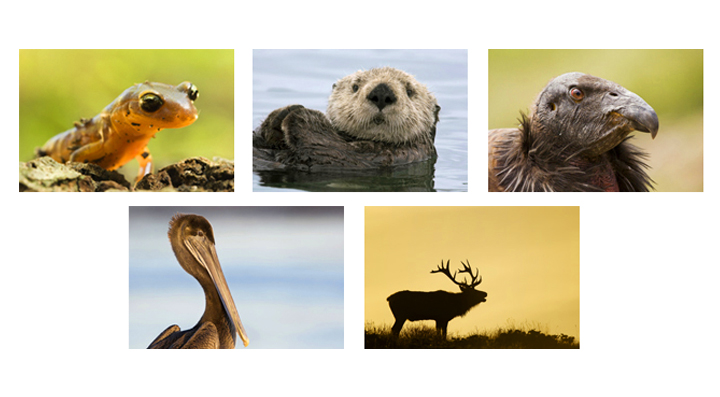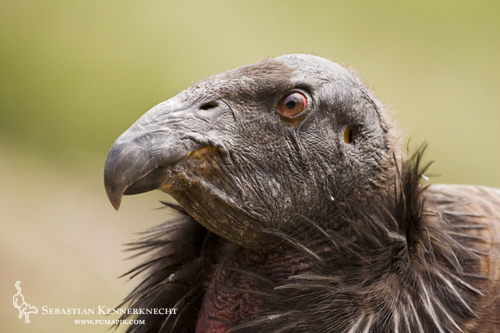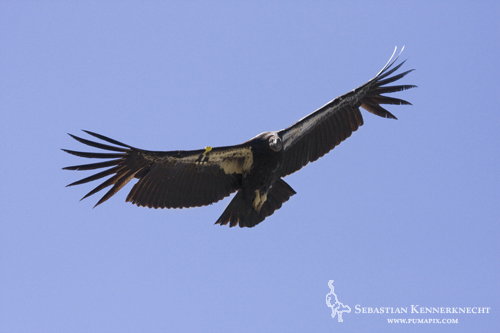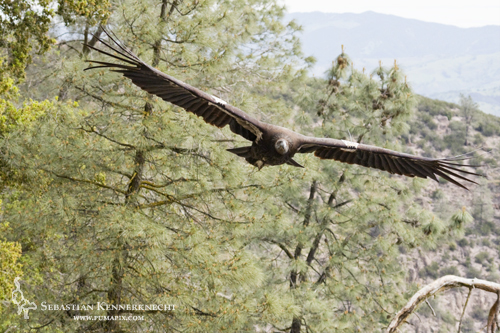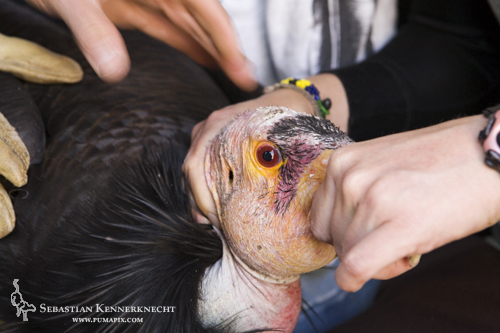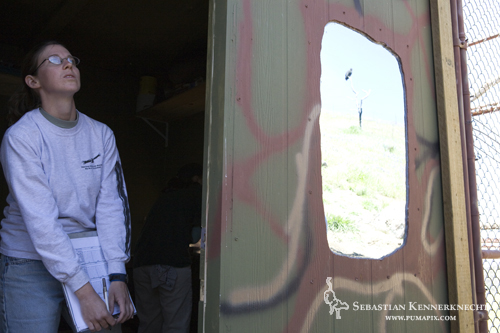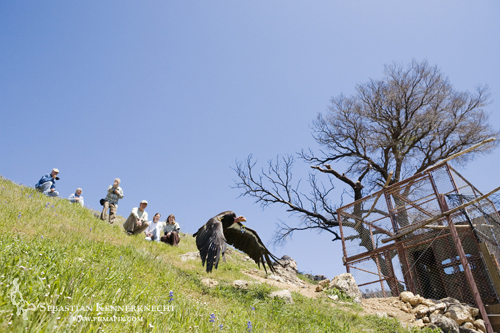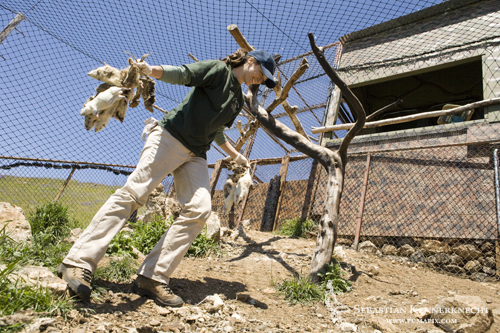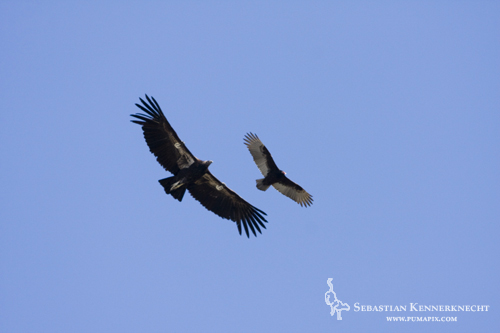If you spend enough time outdoors eventually you get lucky to have ‘once in a lifetime’ wildlife experiences. We all remember these distinct events clearly and I know I won’t forget any of them for the rest of my life. This last weekend I was lucky enough to once again have one of these completely breath taking encounters.
Jeff Swanson, a good friend of mine and amazing landscape photographer, and I made the trek to Pinnacles National Monument to try and find some California Red-legged Frogs that JK let us know we could find there (thanks again Jake). Since we wanted to be at Bear Gulch Reservoir by sunrise that meant getting up at 3:00am. It was amazing to be the only people at the reservoir, it was completely tranquil and quiet (except beautiful bird calls of course!).

Bear Gulch Reservoir, Pinnacles National Monument
Since we didn’t have much luck finding adult frogs (we did find tadpoles which were awesome) and the light was getting harsher we decided to go for a little hike. First we encountered this amazing valley scene:
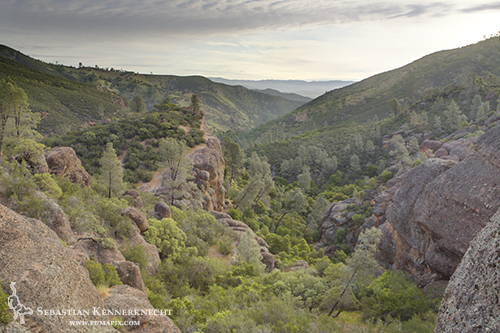
Bear Gulch, Pinnacles National Monument
and then as we were higher up the trail we saw what I was hoping for the whole time while hiking, California Condors!
There were a couple of them perched in a tree so I left my gear with Jeff and went into stalking mode. I was still quite a bit away but got some images with the 100-400 telephoto lens when one of the birds flew right at me and landed on the rocks fifteen feet away from Jeff. I got back there as quickly and quietly as I could, hoping to be fast enough to get some shots but also not too fast to scare the bird away. The juvenile condor then decided it wanted a closer look at Jeff and I so he started hopping even closer (if you have ever seen a condor hop, you know how funny yet powerful it looks). My heart was pounding and my body was shaking from the excitement. I decided to grab some portrait shots while I had the chance, knowing that this was a rare event.
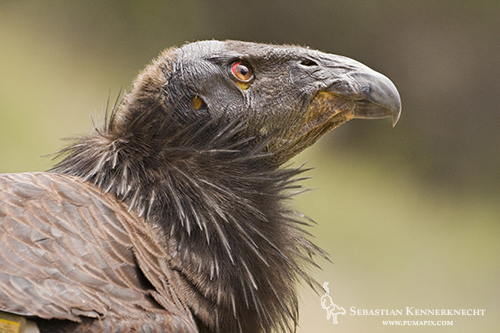
Juvenile male California Condor, Pinnacles National Monument
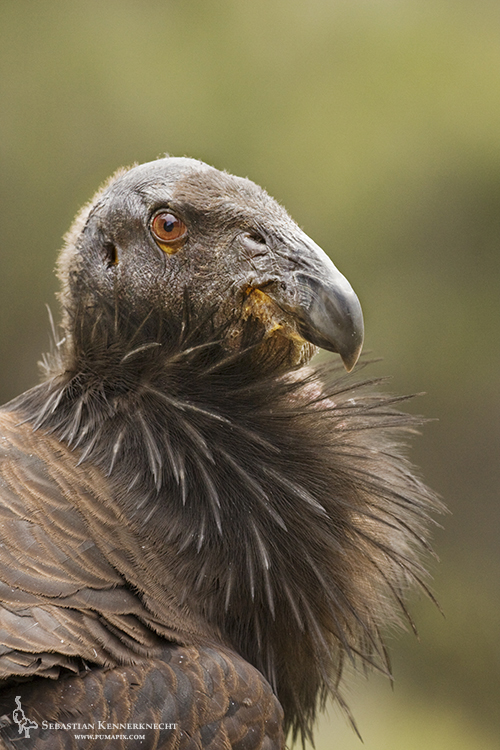
Juvenile male California Condor, Pinnacles National Monument
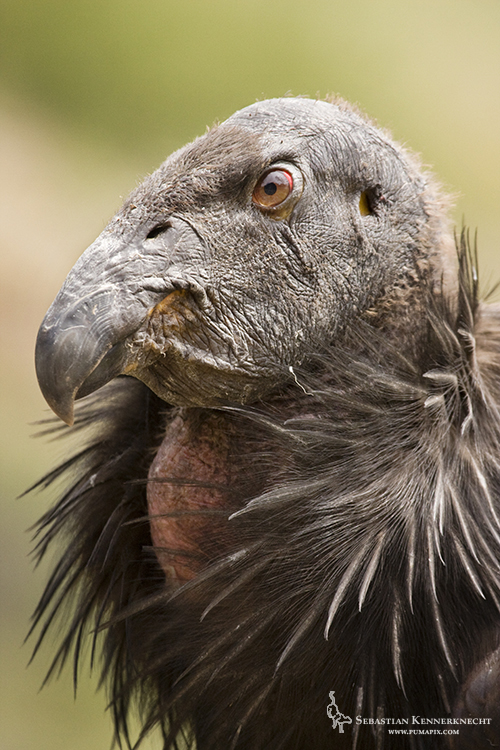
Juvenile male California Condor, Pinnacles National Monument
After having taken about 50 images, he decided to come even closer and was within 5 feet of us. I used my landscape camera and lens to get wide-angle views of him. Here is a shot as he seems to check us out.
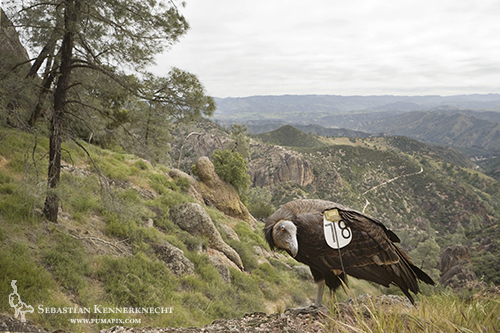
California Condor in Pinnacles National Monument
Just to give you an idea how close he is:
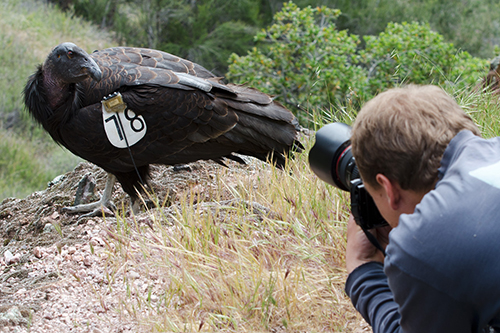
California Condor and me photographing it – Copyright Jeff Swanson
Finally, after about 20-30 minutes he decided to take off again. It was absolutely impressive as he spread his 9 foot wings to glide off.
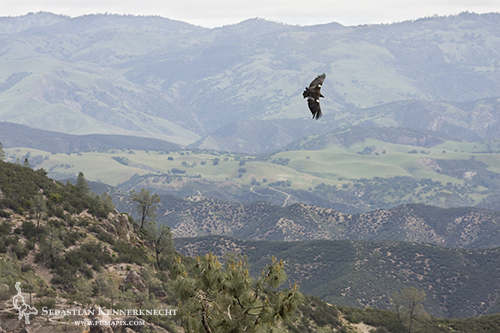
California Condor flying in Pinnacles National Monument
Jeff and I were sitting there for another 10 minutes saying how crazy that really was. What an experience!
Note: I keep using the term he, this is based on his tag that is attached to his wing. It looks like he is a three year old male (his pinkish throat pouch would seem to confirm this as well) born on April 23, 2008. All California Condors are tagged, even the wild born chicks are caught and fitted with a radio transmitter so if you see a bird without a number it is very very unlikely that it is a California Condor. You can find out about each condor’s life on the Condor Spotter site.
What was one of your most memorable wildlife experiences?
*If you are interested in purchasing any of the pictures displayed in this post, please check out my fine prints page for pricing.*

